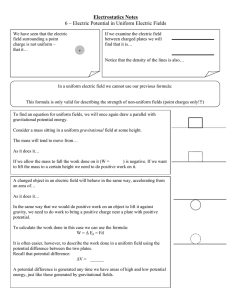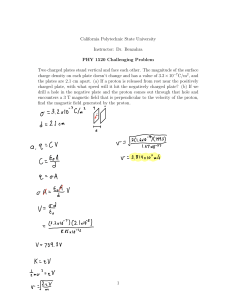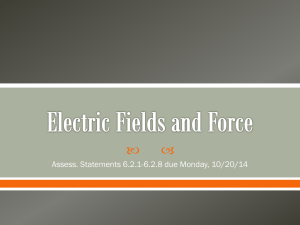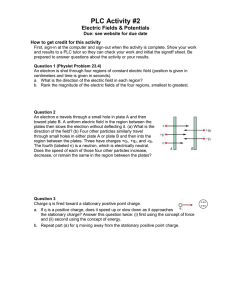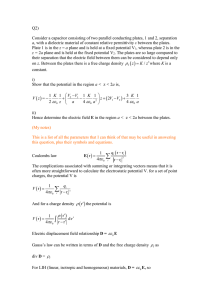Electric Fields & Potential Exercises
advertisement
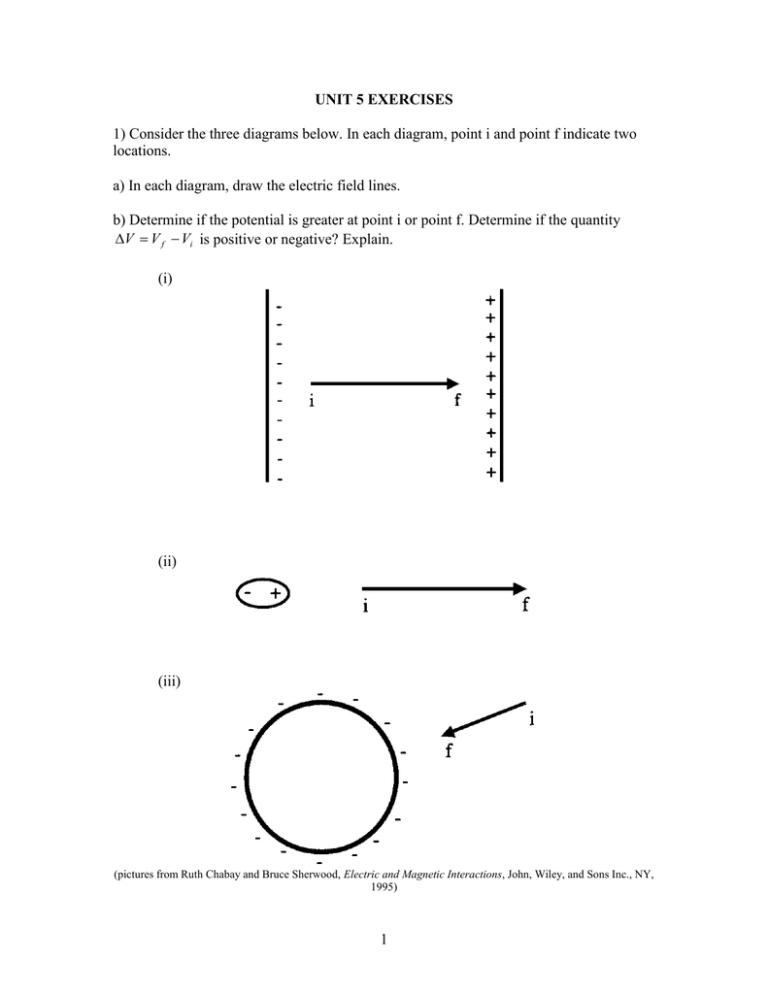
UNIT 5 EXERCISES 1) Consider the three diagrams below. In each diagram, point i and point f indicate two locations. a) In each diagram, draw the electric field lines. b) Determine if the potential is greater at point i or point f. Determine if the quantity V V f Vi is positive or negative? Explain. (i) (ii) (iii) (pictures from Ruth Chabay and Bruce Sherwood, Electric and Magnetic Interactions, John, Wiley, and Sons Inc., NY, 1995) 1 2) Consider two plates, as shown in the diagram below. The top plate is charged positively and the bottom plate is charged negatively. a) The distance between points A and B is 2cm. Determine the work done by the electric force in moving a +0.02C charge from point A to point B. The electric field between the plates is 46N/C. Show your work. b) Determine the electric potential difference between points A and B. Show your work. c) Is the electric potential difference between point C and point D greater than, less than or equal to zero? Explain. 3) When measuring your EKG, you measured the potential difference between two points on your body. Would it matter which two points on your body you used in measuring your EKG? Explain. If your heart is behaving as a positive and negative charge moving towards, passing, and then away from each other, as you modeled it in the lab, is the electric field changing throughout your body? Explain your reasoning. 2

